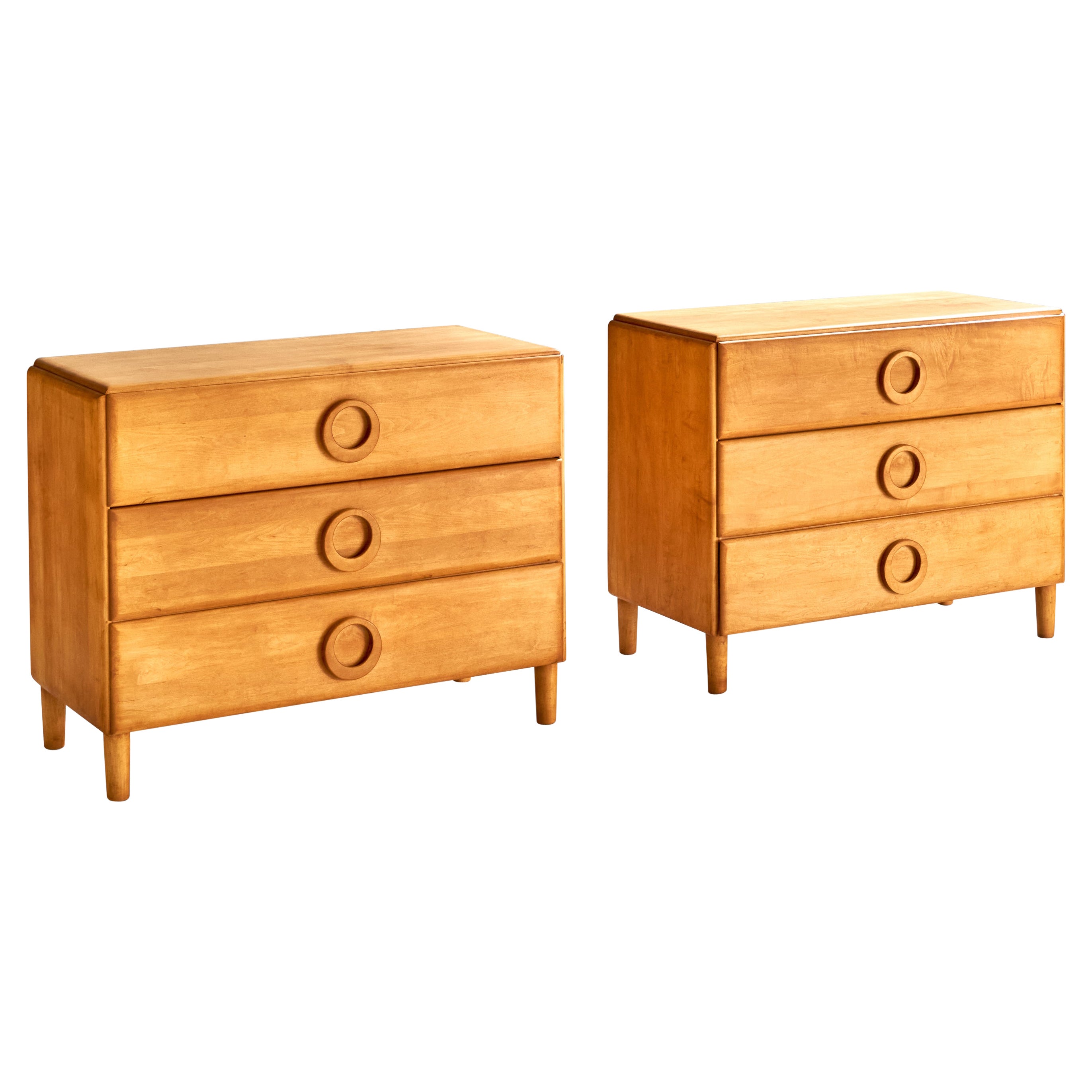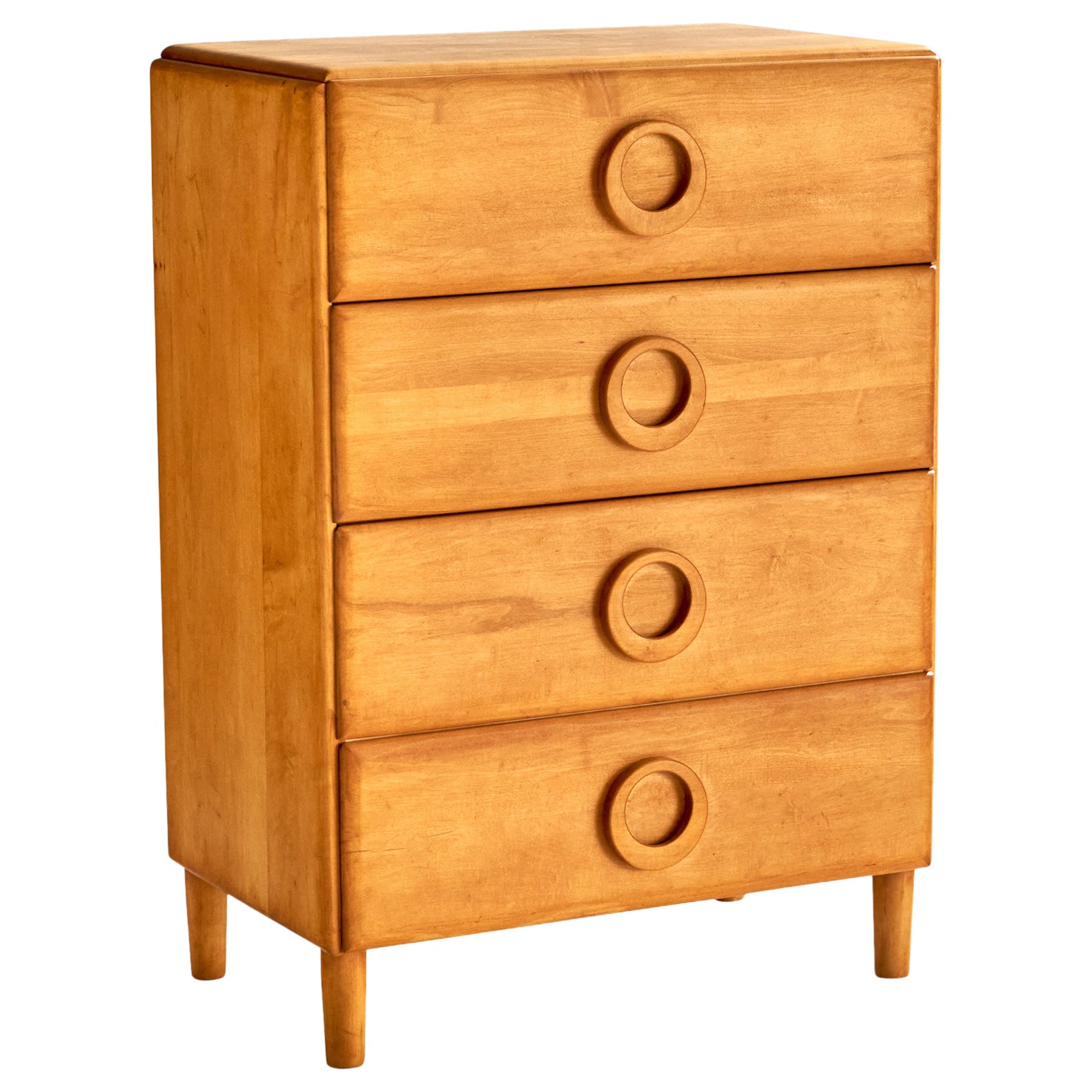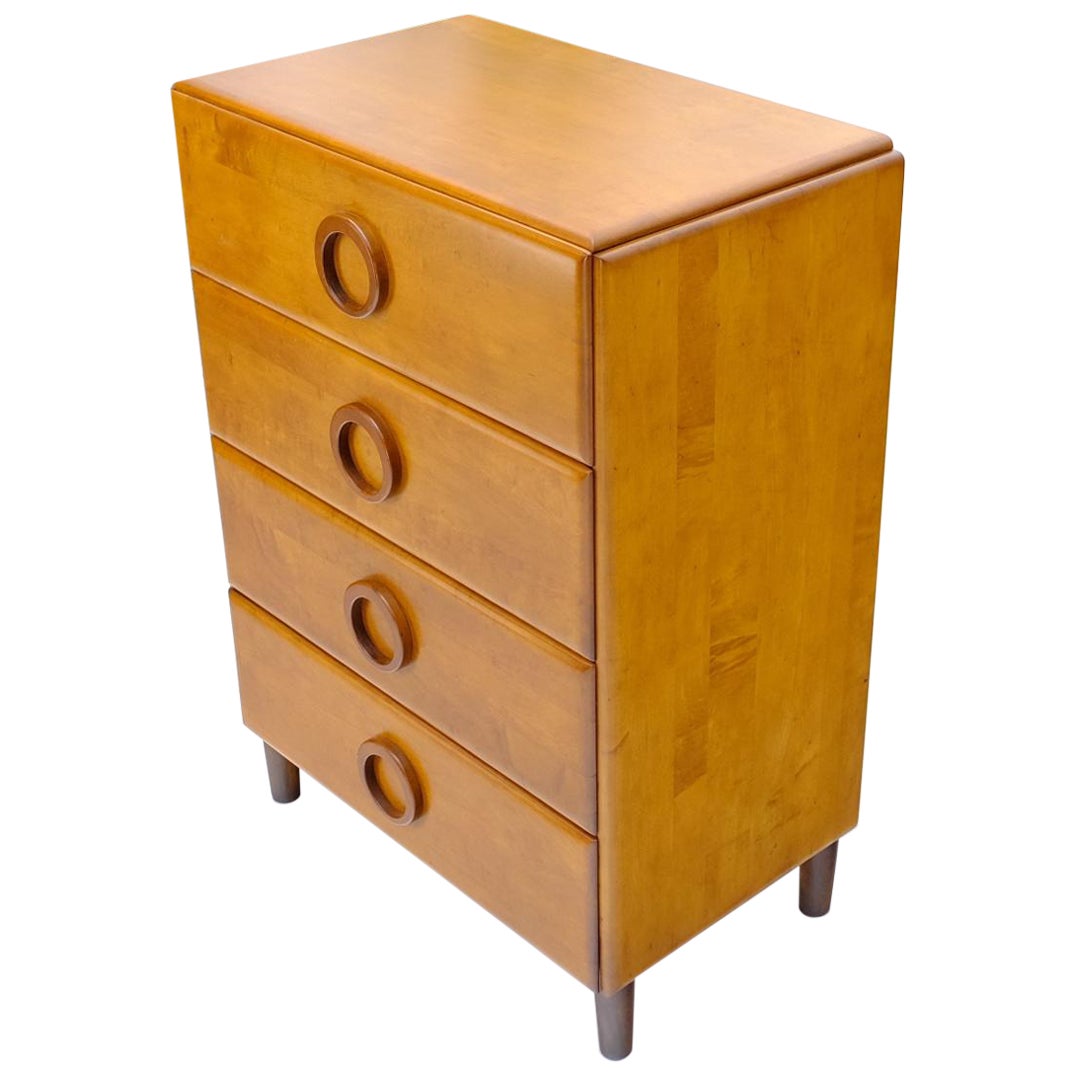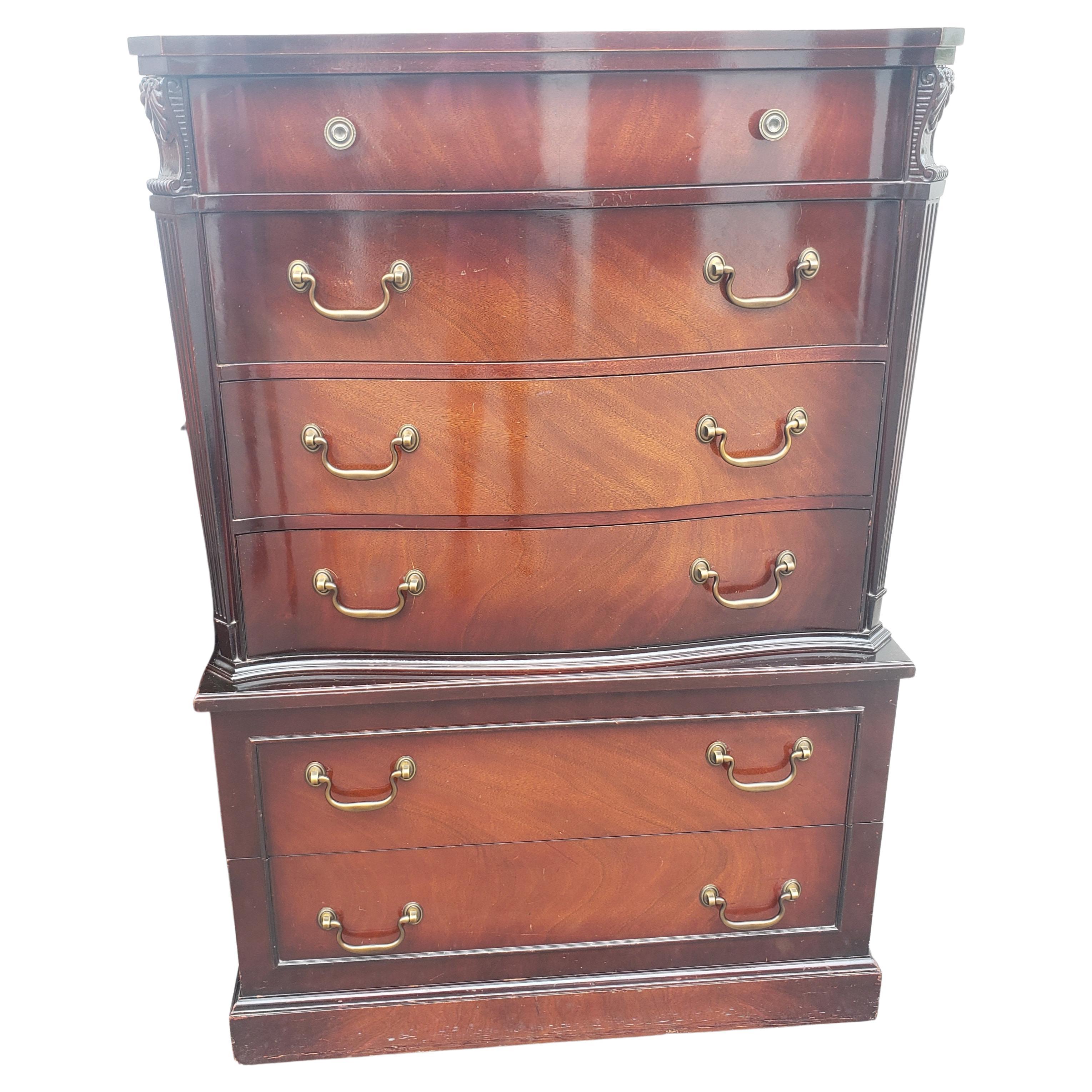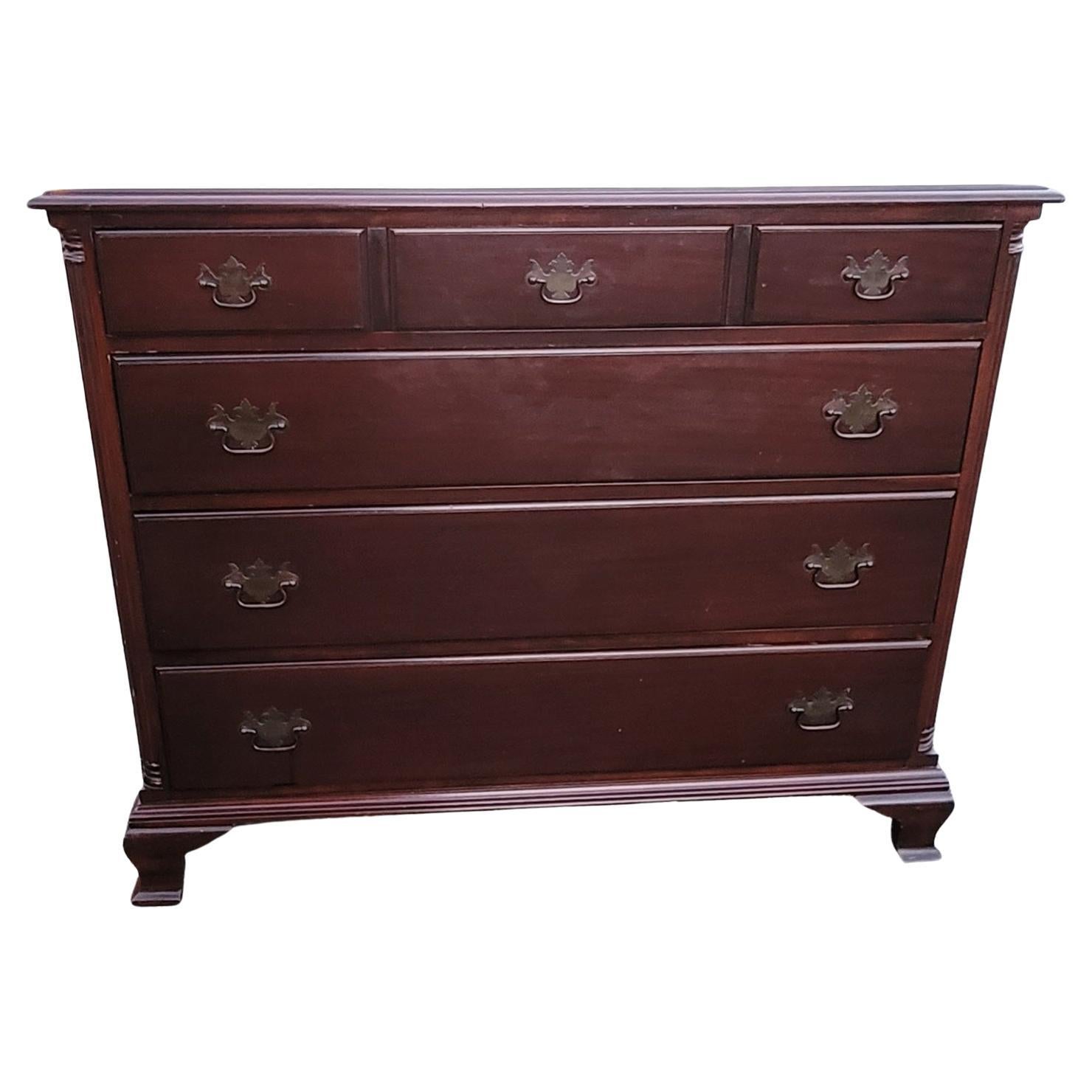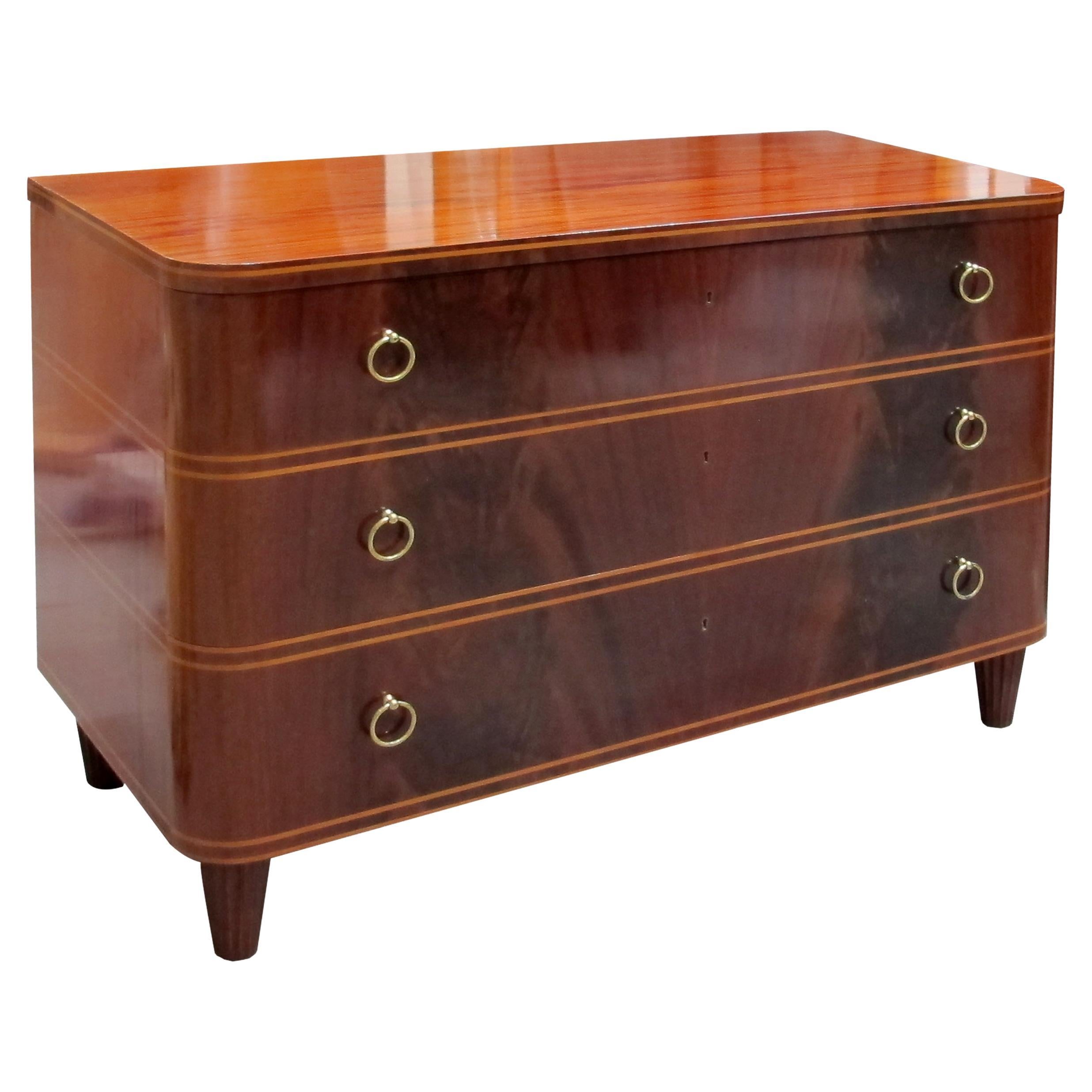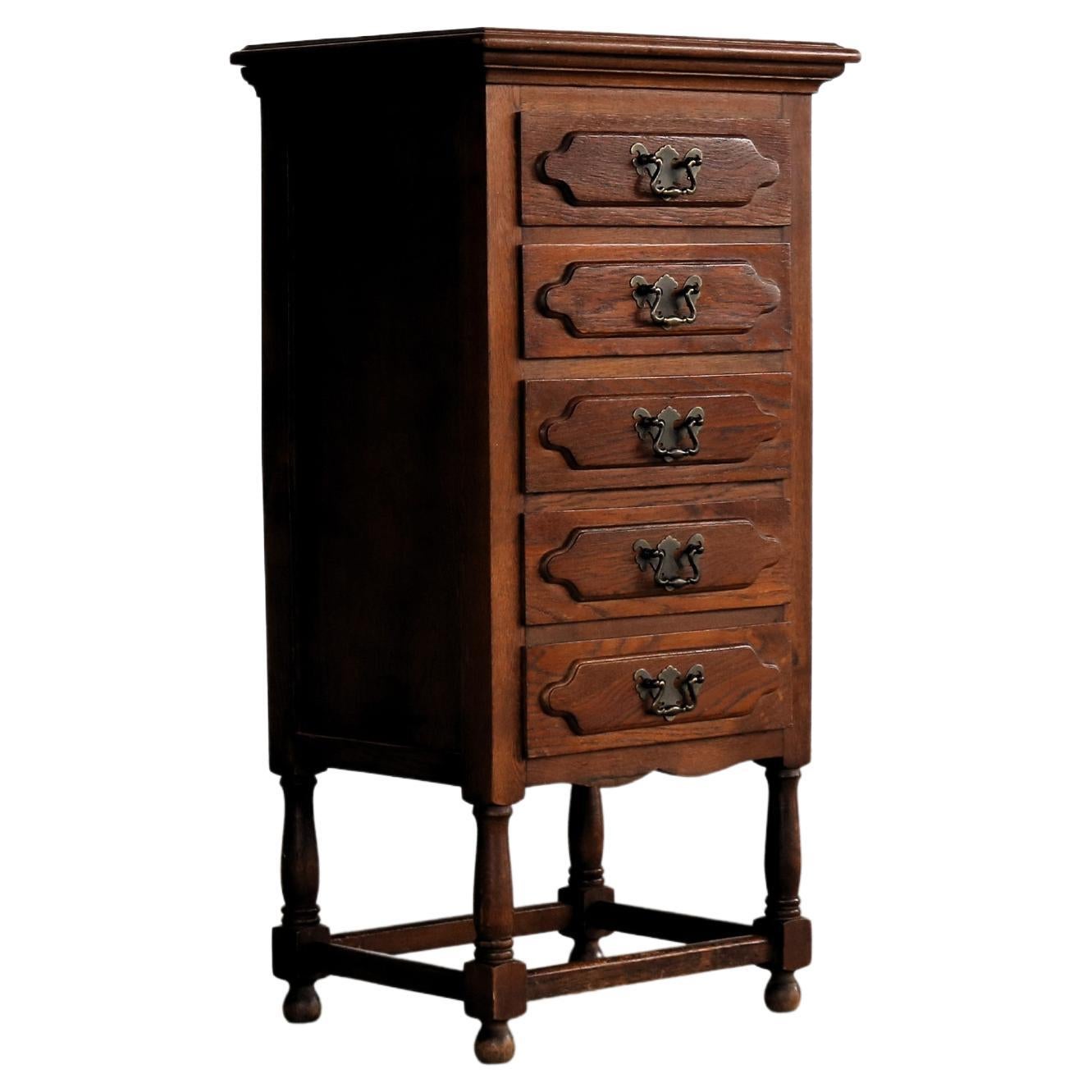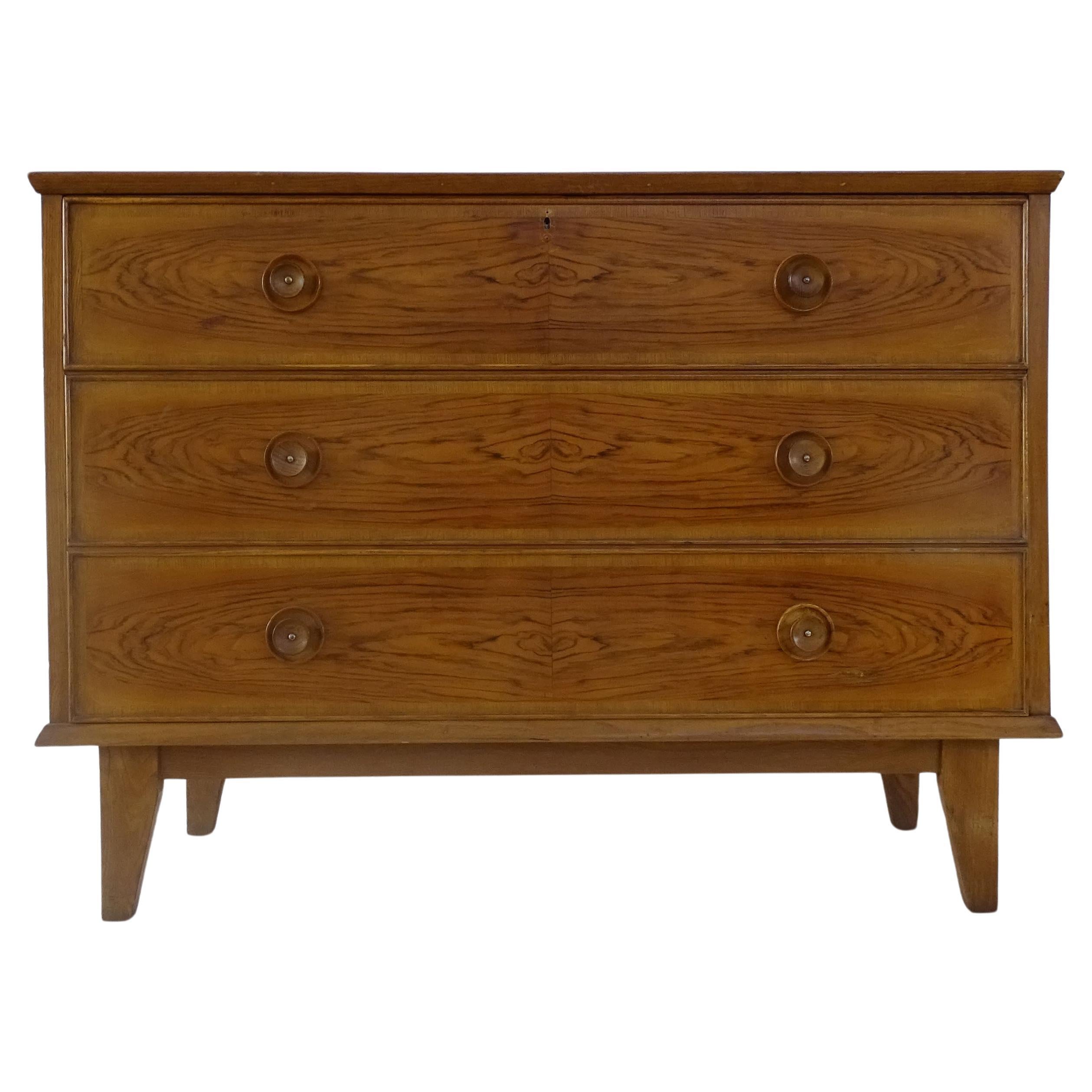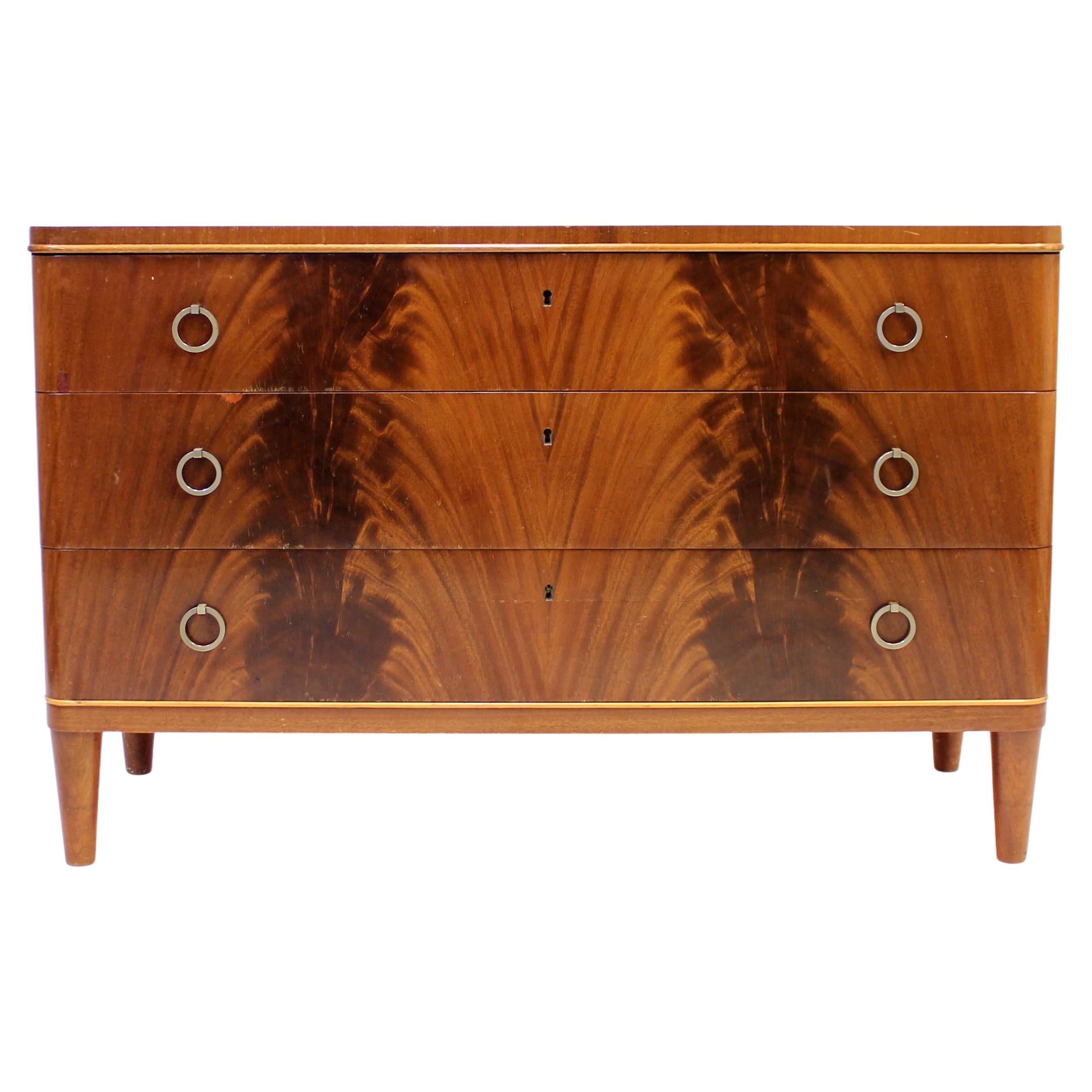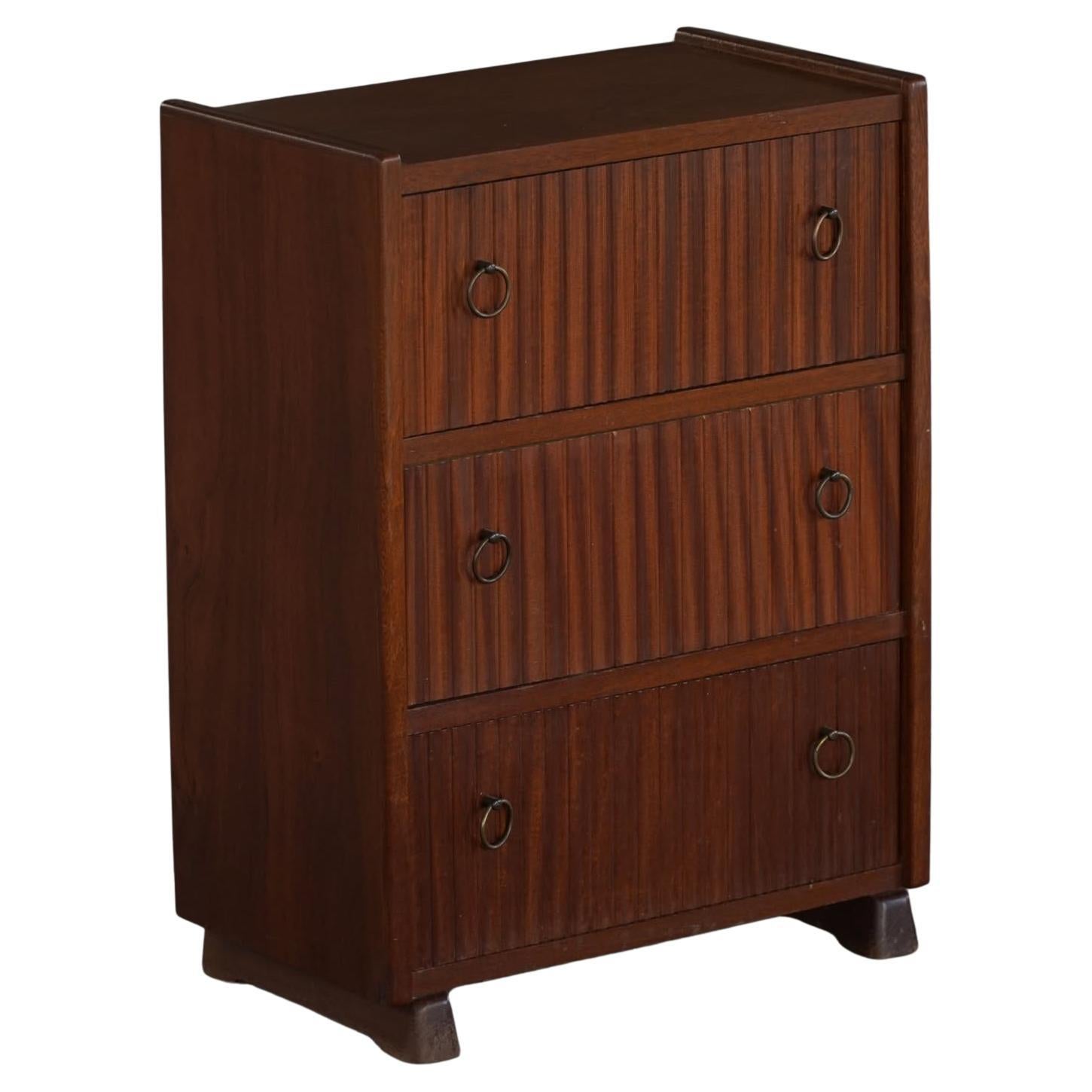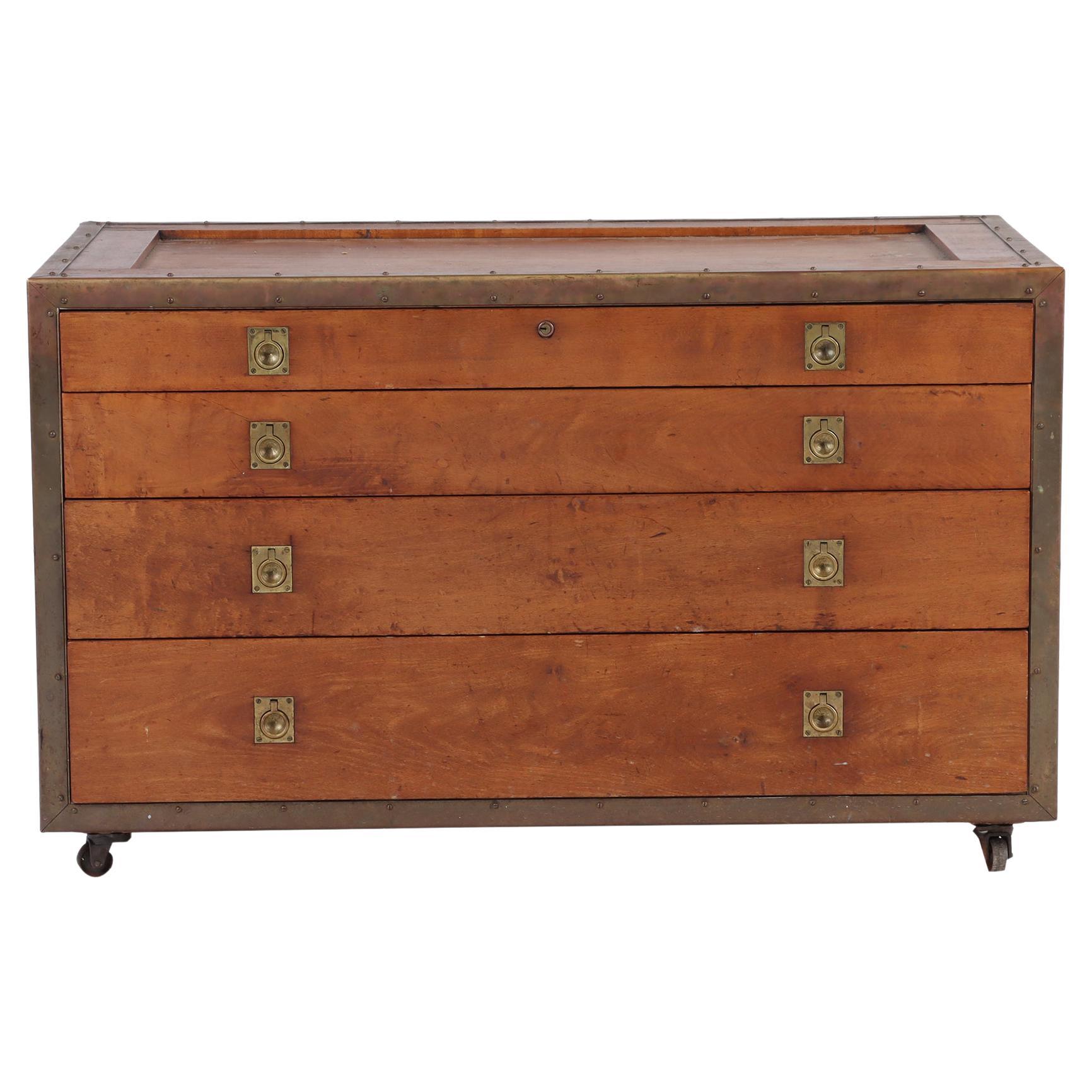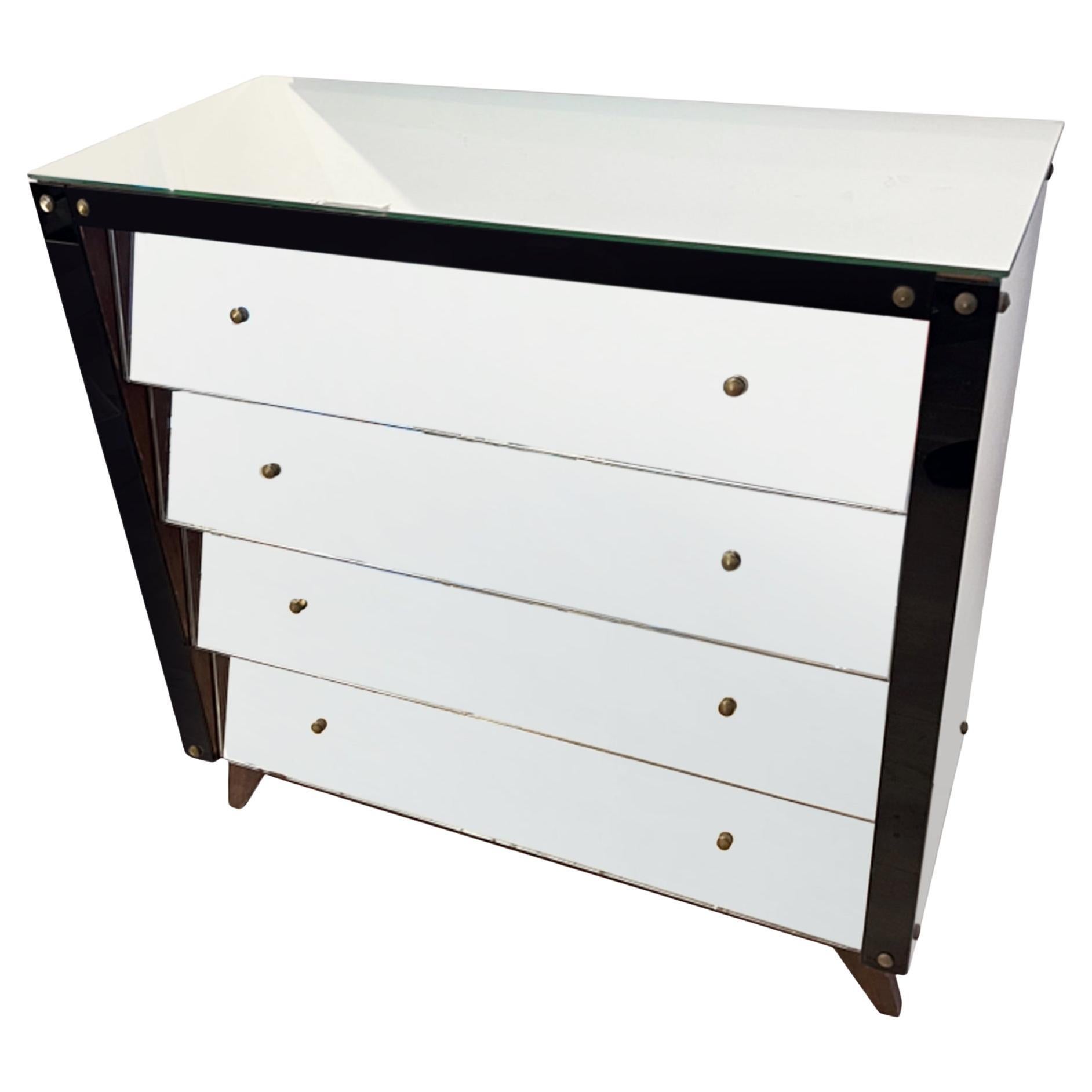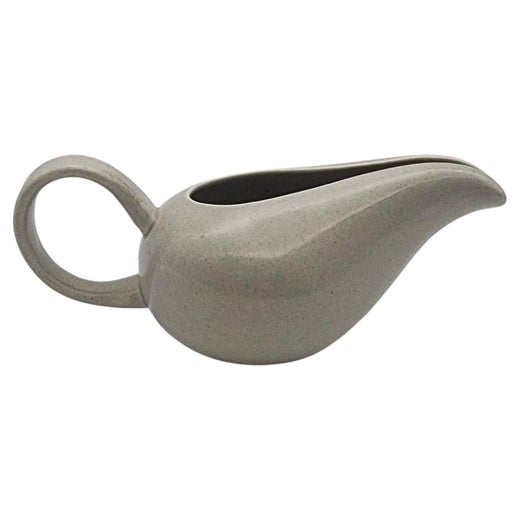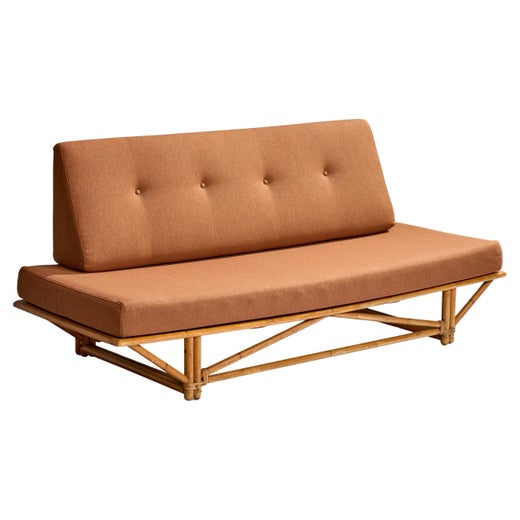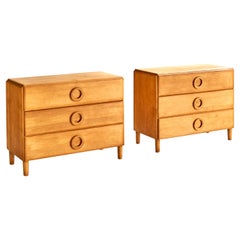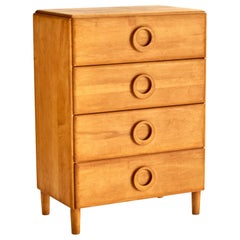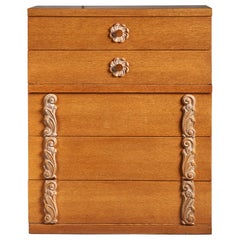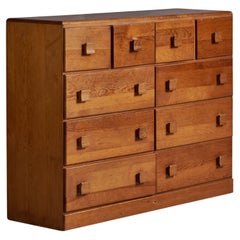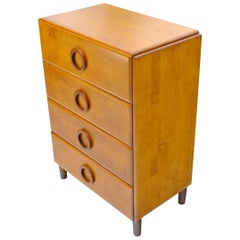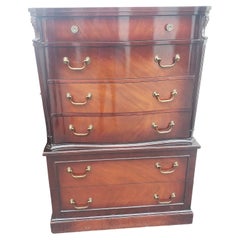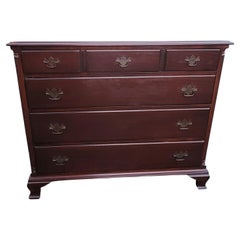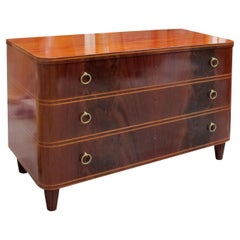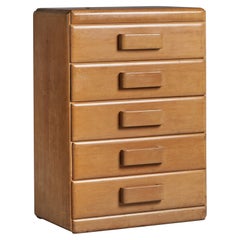
Russel Wright, Chest of Drawers, Mahogany, 1940s
View Similar Items
Russel Wright, Chest of Drawers, Mahogany, 1940s
About the Item
- Creator:Russel Wright (Designer),Heywood-Wakefield Co. (Manufacturer)
- Dimensions:Height: 45.5 in (115.57 cm)Width: 33 in (83.82 cm)Depth: 20 in (50.8 cm)
- Style:Mid-Century Modern (Of the Period)
- Materials and Techniques:
- Place of Origin:
- Period:
- Date of Manufacture:1940s
- Condition:Refinished. Wear consistent with age and use. Touch ups carried out.
- Seller Location:High Point, NC
- Reference Number:Seller: 101521stDibs: LU3228135690842
Russel Wright
While industrial designer Russell Wright may be known to modern furniture enthusiasts for his streamlined end tables, dining chairs and other pieces, he is universally revered for a line of tableware he created called American Modern. Efficient, practical, and striking in their elegant forms and warm colors, the American Modern ceramic pieces, which included bowls, pitchers, dishes, and other items, became the best-selling dinnerware of all time. Today, vintage Russell Wright American Modern tableware is an evergreen favorite of art collectors and interior designers alike.
Born in 1904 in Ohio, Wright was surrounded by inspiration for the furniture he would one day design. He was raised in a Quaker household and grew up with the spare, meticulously handcrafted furniture for which the Quakers are known. As a young man, he studied art and sculpture at the Art Academy of Cincinnati and the Art Students League of New York, going on to study law at Princeton University in New Jersey. But Wright loved the arts and abandoned his pursuit of a law degree to create stage sets in Princeton and Paris alongside fellow noted designer Norman Bel Geddes.
In 1927, Wright married artist and sculptor Mary Einstein. Together, they moved to New York City, where Wright began to create sculptures. Mary convinced him to create metal bookends from his sculptures, and later, when he began to craft bar accessories from chrome, he turned to aluminum, a much cheaper material for the purposes of mass production (his barware was eventually included in the "Machine Art" show at the Museum of Modern Art in 1934, which was curated by Philip Johnson).
Mary worked on marketing Russell's products, successfully proposing everyday uses for Wright's beautifully designed housewares. She is said to have been a pioneer in the world of lifestyle marketing, coining the terms "American Modern" and "blonde" to describe the charming, light-colored maple furniture he created for Conant Ball, which was known at the time for its reproductions of American Colonial furniture.
While Wright had created some Art Deco furnishings for Heywood-Wakefield, it was this group of bedroom furniture for Conant Ball that got its name, American Modern, from Mary. Under her guidance, Wright's attractive, functional designs for the home gained renown, leading to commissions by prestigious companies like the Steubenville Pottery Company.
In 1935, Wright formed Russell Wright Associates with Irving Richards, an entrepreneur who had worked with Lightolier and would later establish Raymor. In collaboration with Richards, Wright debuted the first line of American Modern dinnerware in 1939, which was initially produced by Russell Wright Associates and then manufactured by Steubenville for two decades. The line sold over 200 million pieces during its 20 years of production. In 1955, Wright was selected by the U.S. State Department to research handicraft industries in Southeast Asia, a trip that influenced his later designs.
Throughout his life, Wright continued to design furniture and housewares, with the works' signature earth tones, curved forms, and clean silhouettes of his floor lamps, lounge chairs, and serveware remaining popular staples in American households. In his later years, he focused on designing and building his home, Manitoga, and working with the National Parks Service to develop the "Summer in the Parks" program.
Upon Wright's death in 1974, Manitoga was given to the Nature Conservancy. It was declared a National Historic Landmark in 2006 and today houses the Russell & Mary Wright Design Gallery, where many of Wright's works stand on permanent display. In 2011, stamps from the U.S. Postal Service featured Wright's image as one of the United States' twelve most influential industrial designers.
Find vintage Russel Wright lighting, seating, tables, serveware, ceramics and glass on 1stDibs.
Heywood-Wakefield Co.
Created by the 19th-century merger of two venerable Massachusetts furniture makers, Heywood-Wakefield was one of the largest and most successful companies of its kind in the United States. In its early decades, the firm thrived by crafting affordable and hugely popular wicker pieces in traditional and historical styles. In the midst of the Great Depression, however, Heywood-Wakefield reinvented itself, creating instead the first modernist furniture — chairs, tables, dressers and more — to be widely embraced in American households.
The Heywoods were five brothers from Gardner, Massachusetts, who in 1826 started a business making wooden chairs and tables in their family shed. As their company grew, they moved into the manufacture of furniture with steam-bent wood frames and cane or wicker seats, backs and sides.
In 1897, the Heywoods joined forces with a local rival, the Wakefield Rattan Company, whose founder, Cyrus Wakefield, got his start on the Boston docks buying up lots of discarded rattan, which was used as cushioning material in the holds of cargo ships, and transforming it into furnishings. The conglomerate initially did well with both early American style and woven pieces, but taste began to change at the turn of the 20th century and wicker furniture fell out of fashion.
In 1930, Heywood-Wakefield brought in designer Gilbert Rohde, a champion of the Art Deco style. Before departing in 1932 to lead Herman Miller — the prolific Michigan manufacturer that helped transform the American home and office — Rohde created well-received sleek, bentwood chairs for Heywood-Wakefield and gave its colonial pieces a touch of Art Deco flair.
Committed to the new style, Heywood-Wakefield commissioned work from an assortment of like-minded designers, including Alfons Bach, W. Joseph Carr, Leo Jiranek and Count Alexis de Sakhnoffsky, a Russian nobleman who had made his name in Europe creating elegant automotive body designs.
In 1936, the company introduced its “Streamline Modern” group of furnishings, presenting a look that would define the company’s wares for another 30 years. The buoyantly bright, blond wood — maple initially, later birch — came in finishes such as amber “wheat” and pink-tinted “champagne.” The forms of the pieces, at once light and substantial, with softly contoured edges and little adornment beyond artful drawer pulls and knobs, were featured in lines with names such as “Sculptura,” “Crescendo” and “Coronet.” It was forward-looking, optimistic and built to last — a draw for middle-class buyers in the Baby Boom years.
By the 1960s, Heywood-Wakefield began to be seen as “your parents’ furniture.” The last of the Modern line came out in 1966; the company went bankrupt in 1981. The truly sturdy pieces have weathered the intervening years well, having found a new audience for their blithe and happy sophistication.
Find vintage Heywood-Wakefield desks, vanities, tables and other furniture for sale on 1stDibs.
More From This Seller
View AllVintage 1950s American Mid-Century Modern Commodes and Chests of Drawers
Maple
Vintage 1950s American Mid-Century Modern Commodes and Chests of Drawers
Maple
Vintage 1940s American Mid-Century Modern Commodes and Chests of Drawers
Oak
Vintage 1940s American Mid-Century Modern Commodes and Chests of Drawers
Oak
Vintage 1940s American Mid-Century Modern Table Lamps
Brass
Vintage 1940s Swedish Scandinavian Modern Commodes and Chests of Drawers
Pine
You May Also Like
20th Century American Mid-Century Modern Commodes and Chests of Drawers
Maple
Mid-20th Century English Chippendale Commodes and Chests of Drawers
Brass
Early 20th Century American Chippendale Commodes and Chests of Drawers
Brass
Vintage 1940s Swedish Mid-Century Modern Commodes and Chests of Drawers
Mahogany
Vintage 1940s Dutch Commodes and Chests of Drawers
Oak
Vintage 1940s Italian Mid-Century Modern Commodes and Chests of Drawers
Oak
